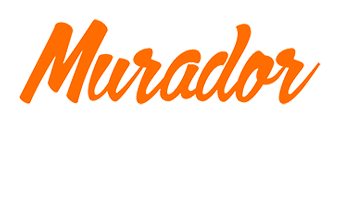More millennials are switching to pay day loans and pawn shops for essential money — techniques that may offer relief that is immediate but usually lead to deeper financial obligation.
That’s based on a brand new research on millennials and financial literacy because of the worldwide Financial Literacy Excellence Center at George Washington University. The analysis features just how much millennials have trouble with individual finance: of the surveyed, 42 % had utilized an alternative solution economic solution, a broad term which includes car name loans, taxation reimbursement advances and rent-to-own items, within the 5 years before the research. Payday advances and pawnshops led record with 34 per cent of participants reporting having utilized them.
Shannon Schuyler, a responsibility that is corporate of PricewaterhouseCoopers, which sponsored the report, explained that though some findings into the research, just like the abuse of bank cards, had been understandable as well as perhaps also expected, “it ended up being harder to actually comprehend the elevated increase in such things as pay day loans and pawn shop use.”
Often, such solutions offer a simple, “short-term” fix to those that wouldn’t otherwise be capable of geting credit that is traditional. However the loans from all of these services feature a catch — usually in the shape of extraordinarily high rates of interest.
Earlier in the day this thirty days, PBS NewsHour covered your debt trap of payday advances in Southern Dakota, where there’s no limit on interest levels. There, the yearly rates of interest on pay day loans are in the triple digits, and also the industry charges a typical of 574 per cent. (To put that in viewpoint, the common yearly rate of interest for bank cards is about 15 percent.) In the event that you took away a $100 cash advance in South Dakota, but made no re payments, you’d wind up owing $674 in per year. Not able to pay back such financing, many debtors sign up for another loan to cover the very first, and so forth. That’s whenever a short-term fix can toss you into a long-lasting financial obligation spiral, leading to even greater fees compared to the loan amount that is original.
Such alternate monetary services have long riddled the storefronts of poorer communities, preying regarding the bad. The good news is, it is maybe maybe maybe not simply low-income millennials who are looking at alternate economic solutions; middle-class, college-educated millennials are aswell.
So just why are far more millennials across socioeconomic lines switching to pay day loans, pawn stores and stuff like that?
One description is too little economic literacy. Based on the research, merely a 24 per cent of millennials indicate fundamental knowledge that is financial the capacity to do calculations regarding rates of interest and show a knowledge of risk diversification, interest re re payments on home financing therefore the relationship between rates of interest and relationship rates.
Economic literacy classes in senior high school and even previously, Schuyler recommends, could possibly be helpful. At this time, just 17 states require pupils just take classes in individual finance.
Another element is desperation. In line with the research, numerous if you don’t most millennials don’t have savings to fall straight straight back on. Almost 50 % stated they’dn’t have the ability to come up with $2,000 in the next month if they needed it. (That’s not only a thing that is millennial a Federal Reserve research showed just 53 per cent of adult participants thought they might protect a hypothetical crisis cost costing $400 without attempting to sell something or borrowing cash.)
“once you visit a pawn store, you’ll want to simply simply simply take that item in instantly, as you require that cash that time,” Schuyler said.
Helaine Olen, co-author of “The Index Card: Why private Finance Doesn’t Have to Be Complicated,” noticed that the study would not ask why millennials are embracing alternate economic solutions, but noted that education loan debt likely plays a site big part.
In 2013, 7 in 10 graduates of general general public and nonprofit colleges had debt that is student-loan $28,400 per debtor. Crushed by figuratively speaking, millennials are dealing with rents that are rising stagnant wages too.
“They’re to arrive with massive education loan debt, they’re having a horrific time getting a foothold at work and beginning salaries aren’t what they when were,” stated Olen. “So you’re likely to do more with less? Exactly exactly exactly How precisely does that work?”
David Weliver, creator regarding the cash Under 30 internet site, echoed sentiment that is olen’s. “Even you’re still competing for fewer well-paying jobs, and the price of everything, except for gas, is going up. if you don’t have student loan debt,”
Plus, Weliver said, a complete large amount of millennials don’t have actually credit yet. “A lot of individuals had been inside their very early 20s and in university throughout the Great Recession and thought they were being smart by avoiding credit.” But lacking a solitary education loan re re payment might have a much greater effect on your credit rating when you’ve got small credit score, Weliver stated. With no or dismal credit history, payday advances and pawn stores may seem like an alternative that is attractive.
